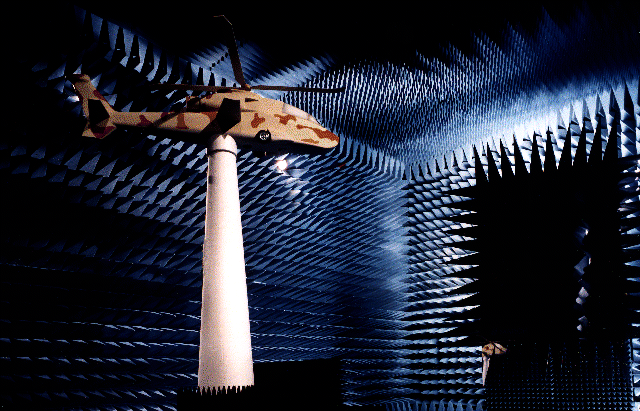A true pioneer, Constantine Balanis is a touchstone in his field.

The IEEE Electromagnetic Award medal.
Arizona State University Regents Professor Constantine A. Balanis is the 2021 recipient of the prestigious IEEE Electromagnetic Award from the Institute of Electrical and Electronics Engineers.
Recipients of the award must demonstrate “outstanding contributions to the theory or application of electromagnetics.”
Balanis not only meets that standard, he set the standard. He is an accomplished author, lecturer, researcher and inventor who is held in the highest esteem by his peers.
Balanis’ interest in electromagnetics started nearly 60 years ago when he was a senior at Virginia Tech. A class on microwave engineering was all it took to set him on his career path.
After graduating in 1964 with his BS in electrical engineering, he joined NASA at the Langley Research Center in Hampton, Virginia. During his first week there, he had the opportunity to select the department in which he could work. Balanis chose electromagnetics.
While at NASA, Balanis made significant contributions to modeling, designing, simulating, and measuring the electromagnetic characteristics of microwave and antenna components and space applications systems. He also completed studies for a master’s degree in electrical engineering in 1966 from the University of Virginia and then earned his PhD in the same field in 1969 from The Ohio State University,
As a new decade unfolded, a new career path emerged. In 1970, Balanis took a position at West Virginia University, teaching undergraduate and graduate courses and setting up electrical engineering research programs on antennas and electromagnetics.
As a trailblazing innovator in book authorship and teaching, Balanis made a name for himself as the author of “Antenna Theory: Analysis and Design.” Originally published in 1982, and now in its 4th edition, the text is highly referenced by his peers and students and has been cited more than 32,000 times according to Google Scholar. The book dubbed the ‘Diamond in the Desert’ has been used as a textbook worldwide by more than 2,000 colleges and universities.
After 13 years at West Virginia University, Balanis made his move to the western United States to become a professor at Arizona State University and later director of the university’s Telecommunications Research Center or TRC.
Balanis immediately became an integral member of the ASU faculty by revamping the current electrical engineering curriculum. His updating of classes and the development of new courses helped to bring the program in line with leading academic programs in the field around the country.
In 1985, Balanis designed and developed a world-class ElectroMagnetic Anechoic Chamber, or EMAC, at ASU for antenna, microwave and radar cross-section, or RCS, measurements. The chamber has tested scaled airframes, including a NASA Generic Helicopter, A4 Skyhawk, F87 and a drone. The EMAC is still in use today and is one of the largest university-based electromagnetic anechoic chambers in the United States.

ElectroMagnetic Anechoic Chamber (EMAC) at ASU
In 1989, Balanis followed up on his first book’s success with the publication of “Advanced Engineering Electromagnetics,” another gold standard for the industry. It is considered the preeminent textbook for teaching graduate courses on electromagnetics and has led thousands of engineering students to teach, do research and pursue careers in the field.
His innovative approach to education earned Balanis the title of Regents Professor in 1991 — the highest honor bestowed on faculty members at Arizona’s state universities.
Over the past 37 years, Balanis has been instrumental in developing TV and Online electrical engineering courses at ASU, which helped to make ASU’s electrical engineering program accessible to more students in the country and the world.
Balanis has also made recent significant contributions to research in artificial magnetic conductors by enhancing the radiation characteristics of low-profile and leaky-wave antennas and reducing the RCS of radar targets by using checkerboard architectural patterns.
Balanis is an IEEE Life Fellow and has received an honorary doctorate from the Aristotle University of Thessaloniki, AUTH, in Thessaloniki, Greece, in 2004.
He has been a member of the IEEE professional society since joining as a student in 1962. When asked how IEEE membership has impacted his career, Balanis says, “Without a doubt, it’s been very beneficial, connecting with colleagues, attending conferences, even meeting future graduate students. You need to be part of a technical society in whatever field you are in. It worked for me; it should work for all. It is a win-win relationship.”
Balanis has earned a multitude of awards for teaching, research and service, including:
- The IEEE Rudolph E. Henning Distinguished Mentoring Award (2017)
- The James R. James, Lifetime Achievement Award, LAPC, Loughborough, UK (2014)
- The Distinguished Achievement Award of the IEEE Antennas and Propagation Society (2012)
- The Distinguished Achievement Alumnus Award (College of Engineering, The Ohio State University) (2012)
- The Chen-To Tai Distinguished Educator Award of the IEEE Antennas and Propagation Society (2005)
- The IEEE Millennium Award (2000)
- The Graduate Mentor Award of Arizona State University (1996)
- The Special Professionalism Award of the IEEE Phoenix Section (1992)
- The Individual Achievement Award of the IEEE Region 6 (1989)
- The Graduate Teaching Excellence Award, School of Engineering, Arizona State University (1987-1988)

Constantine Balanis at Pebble Beach.
